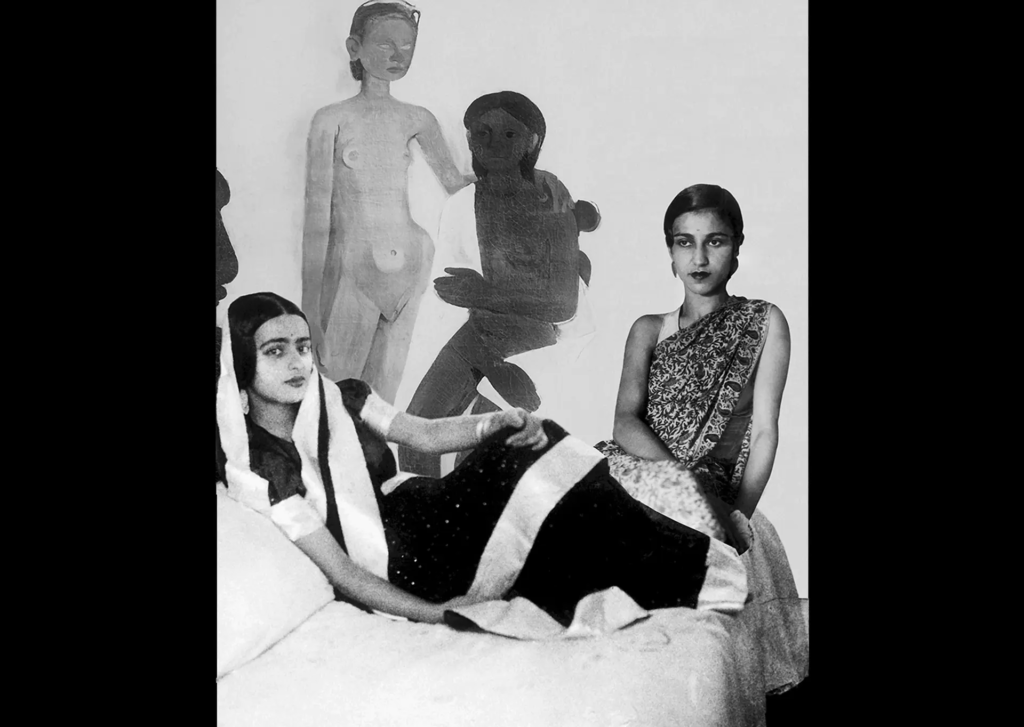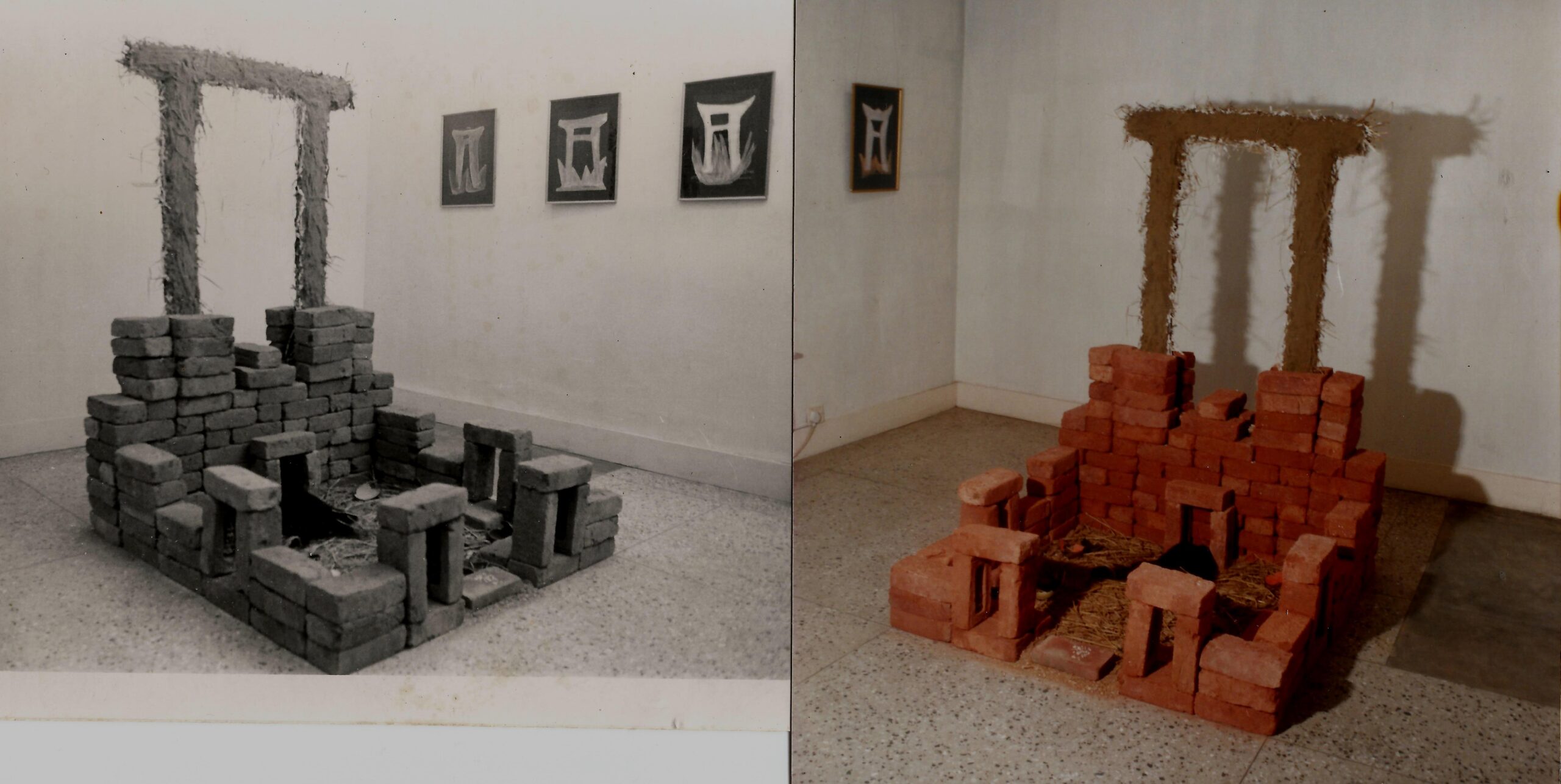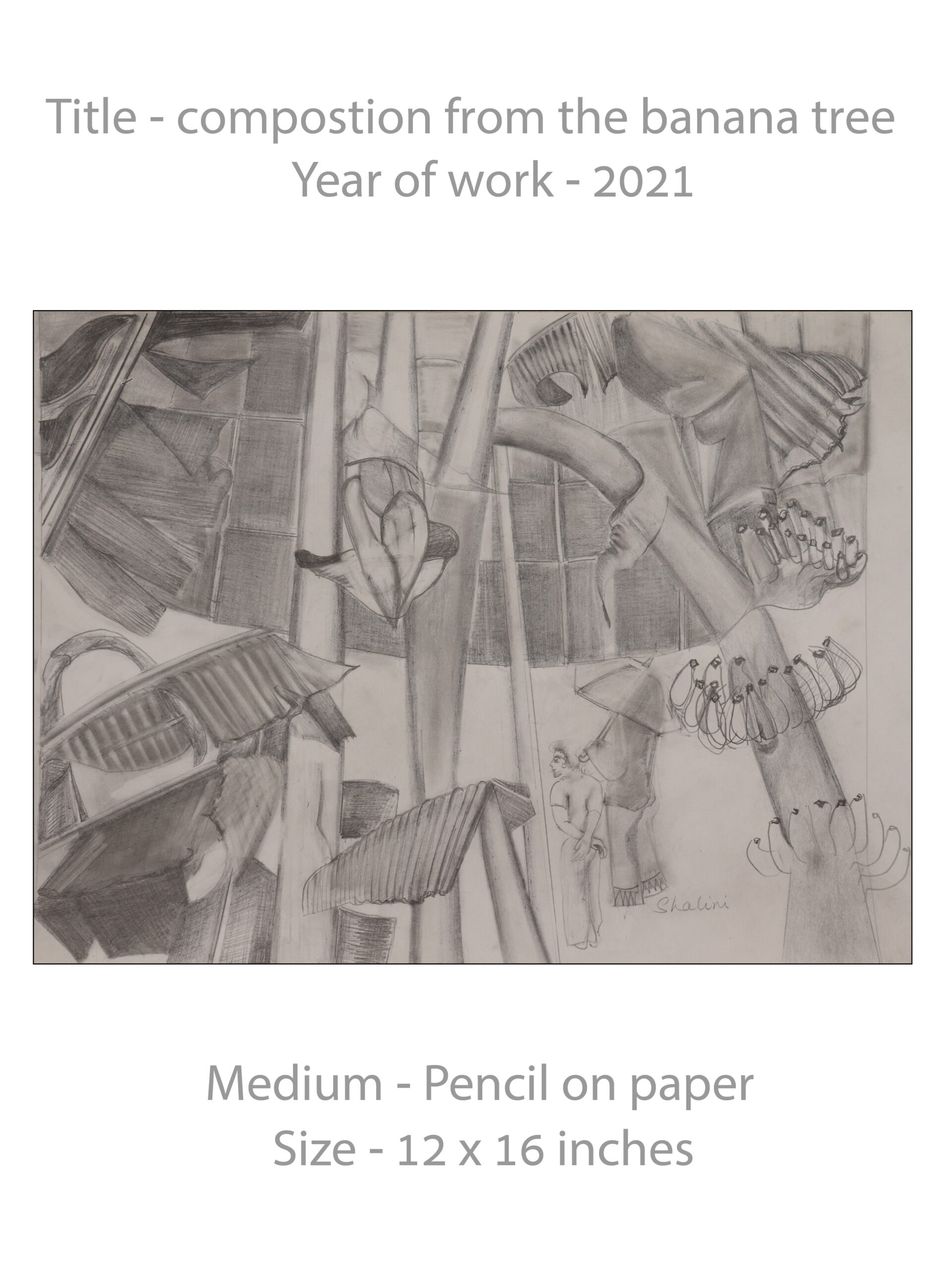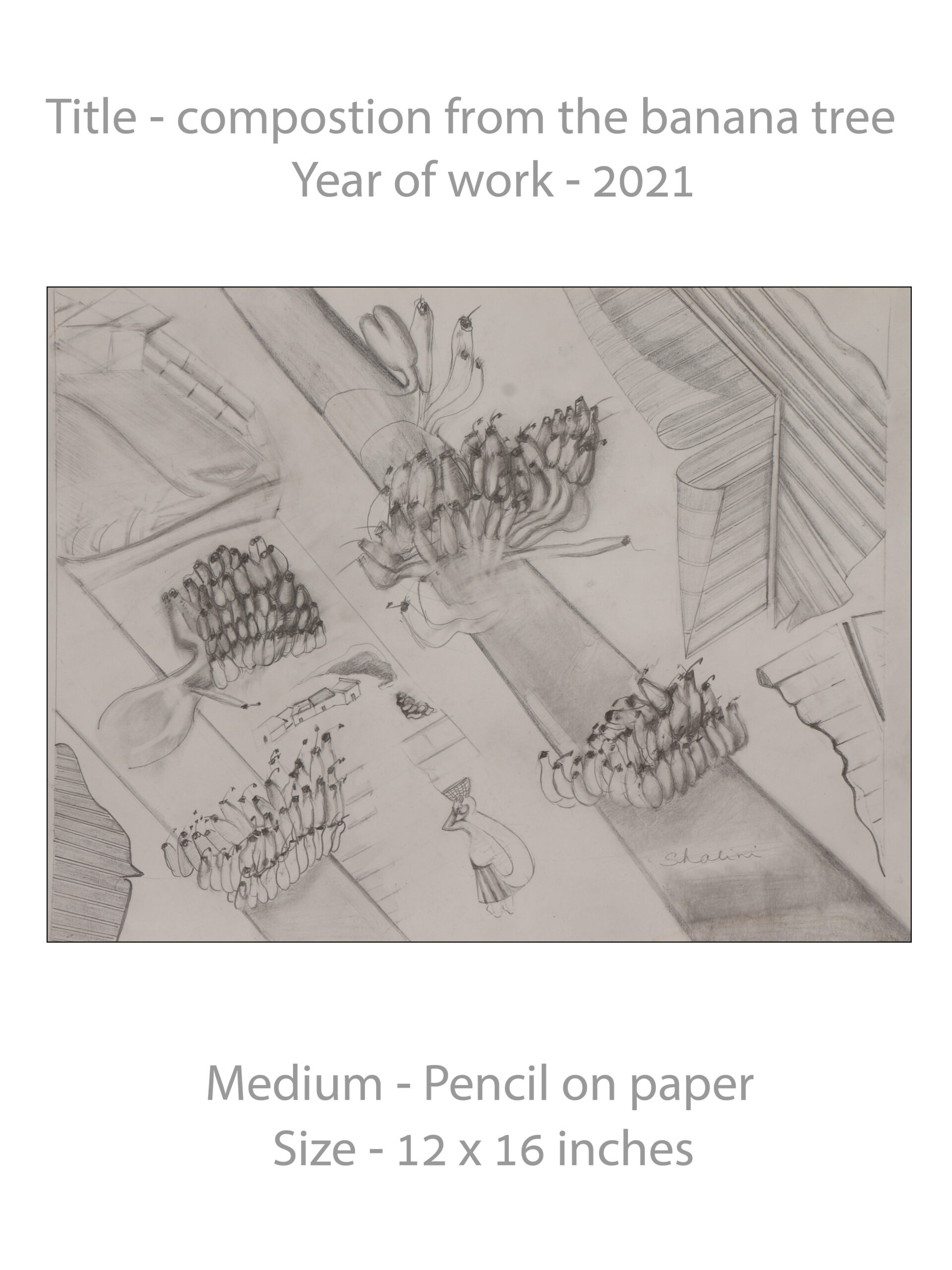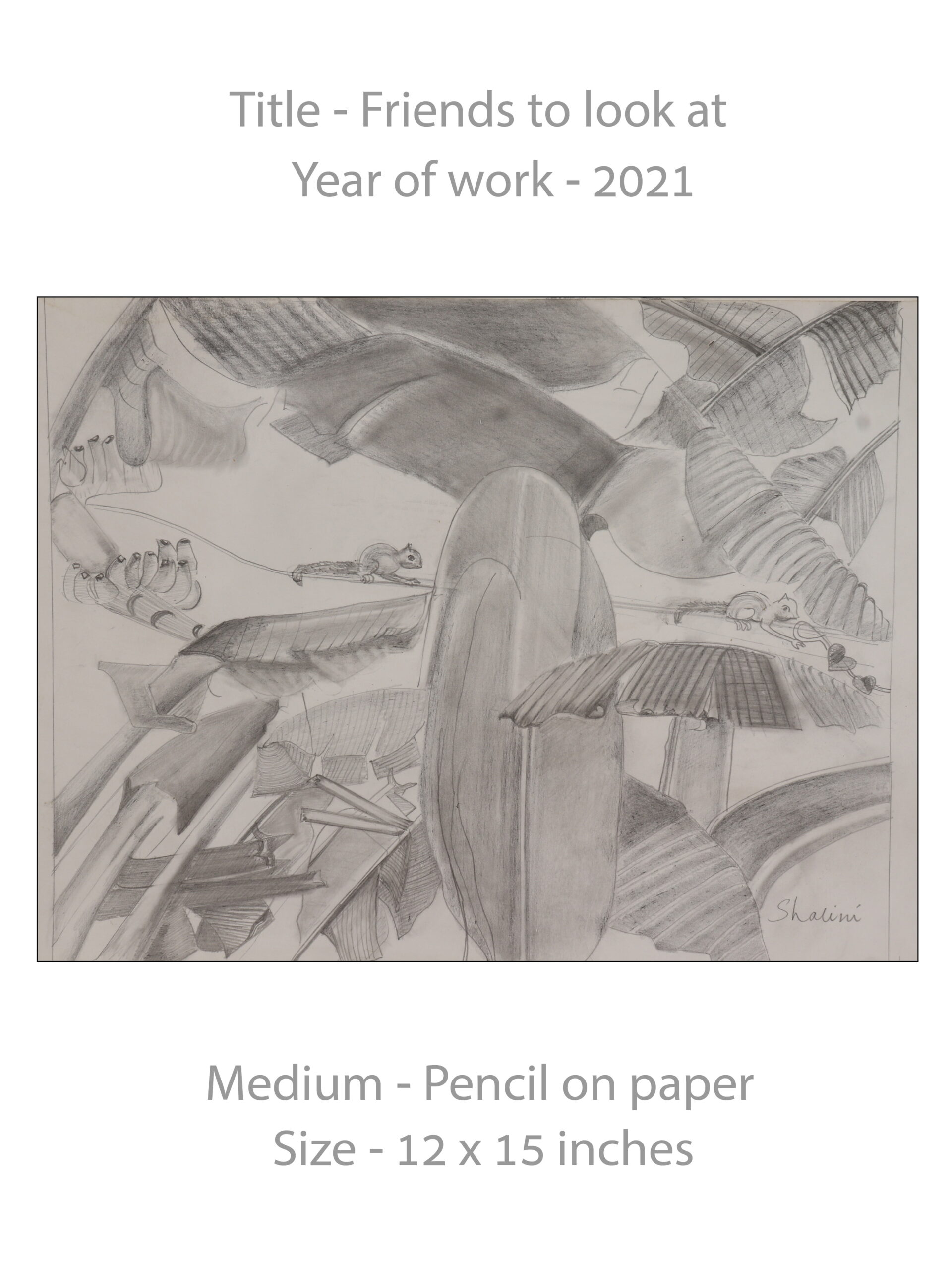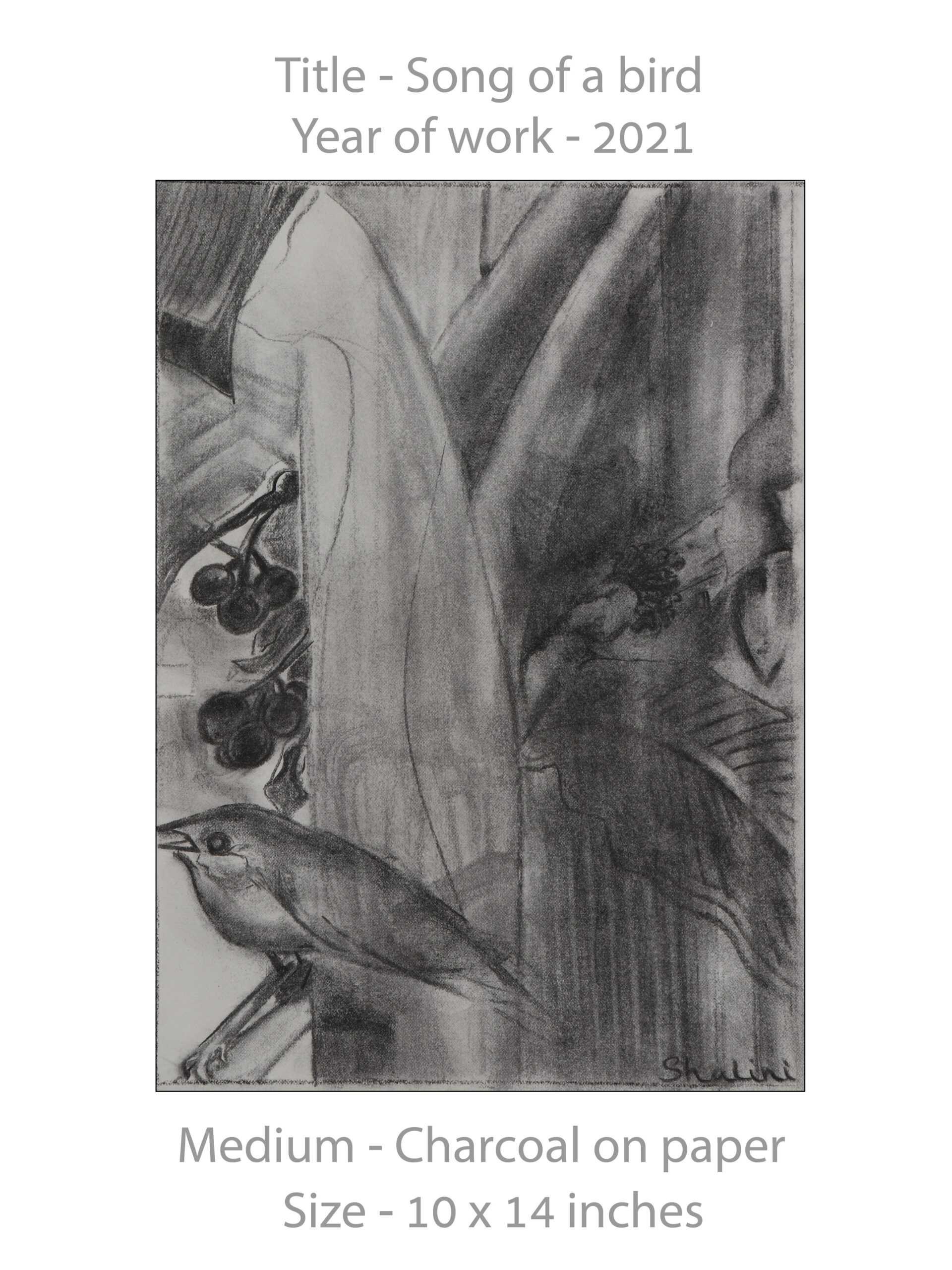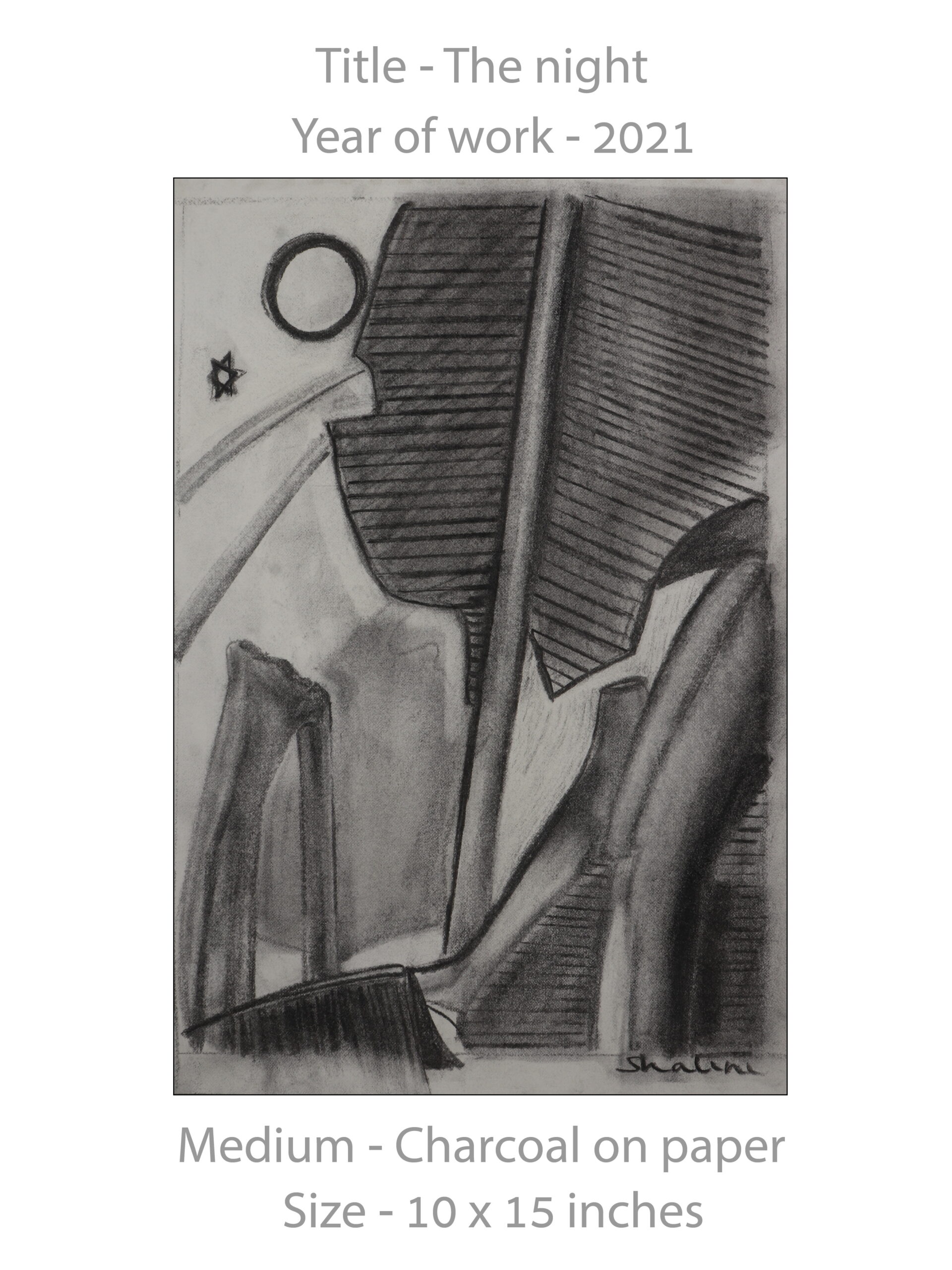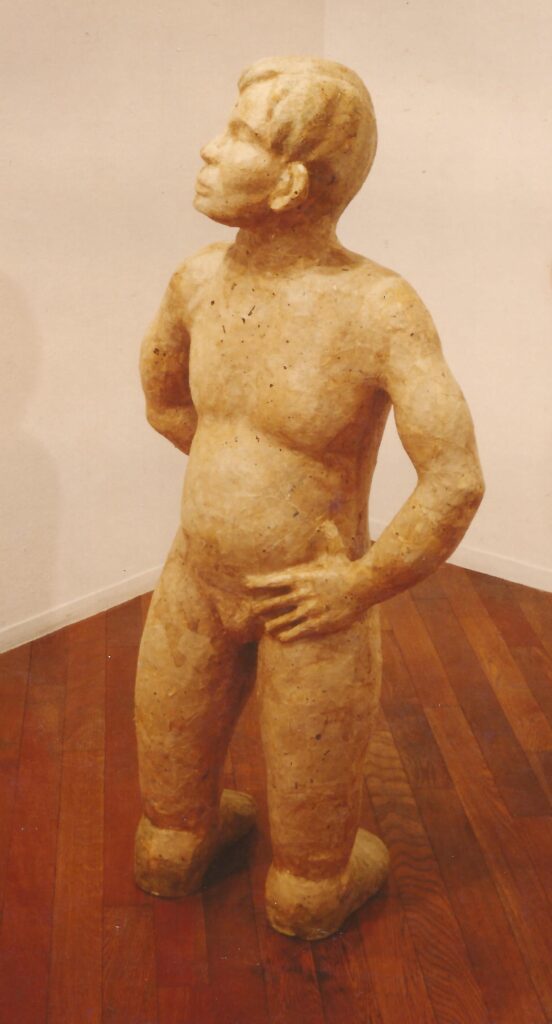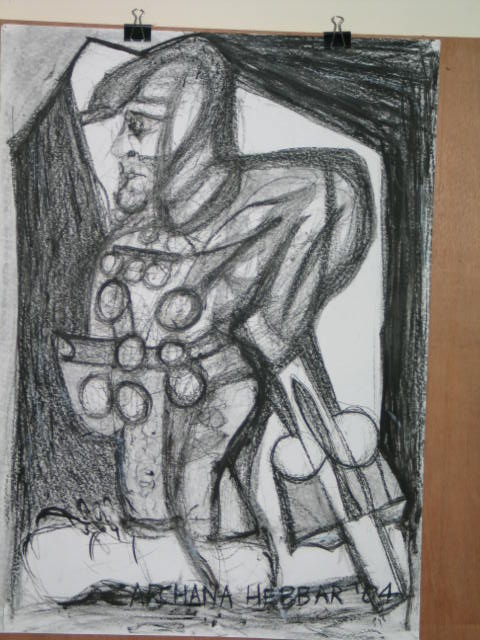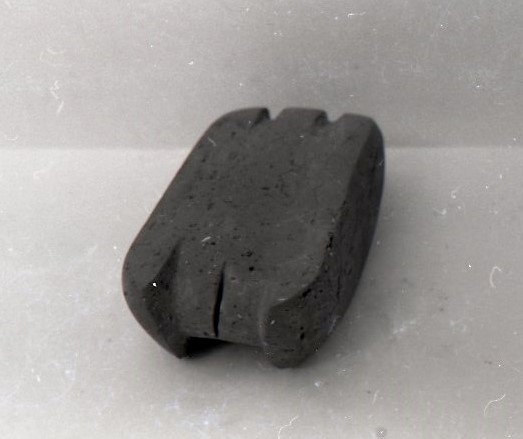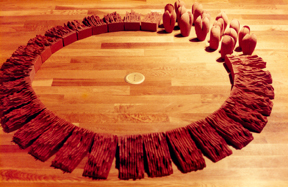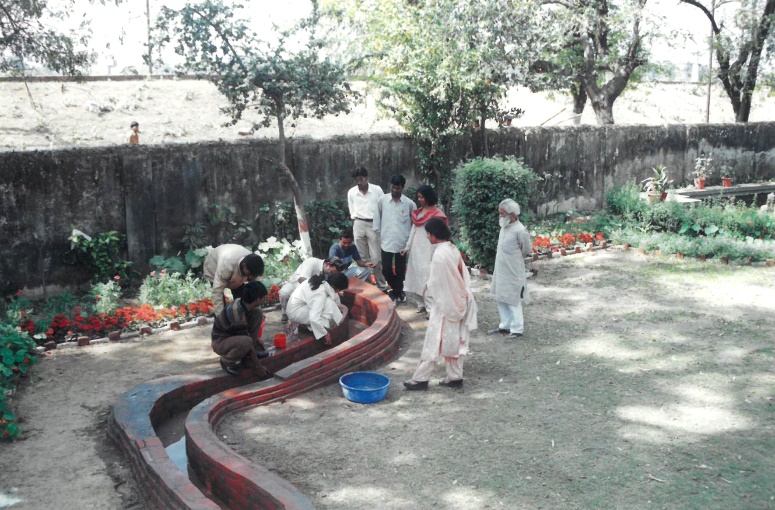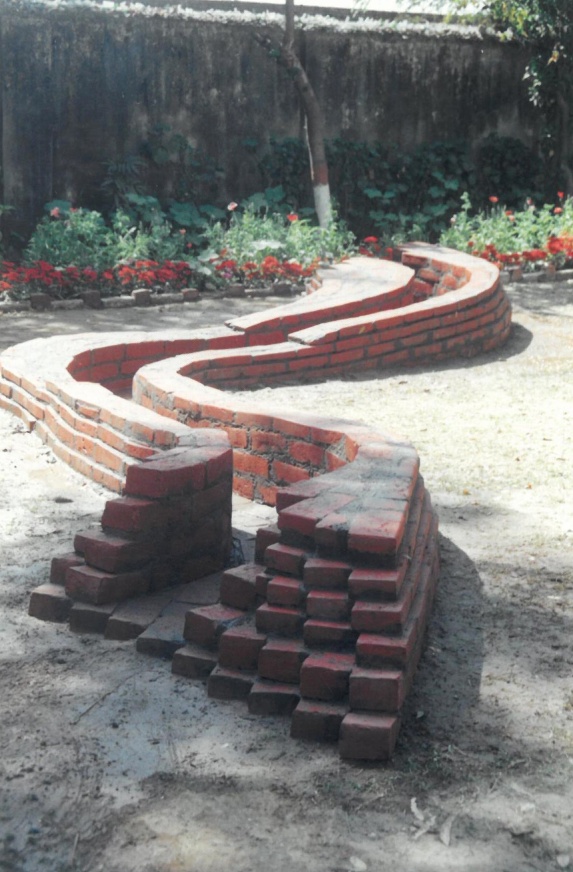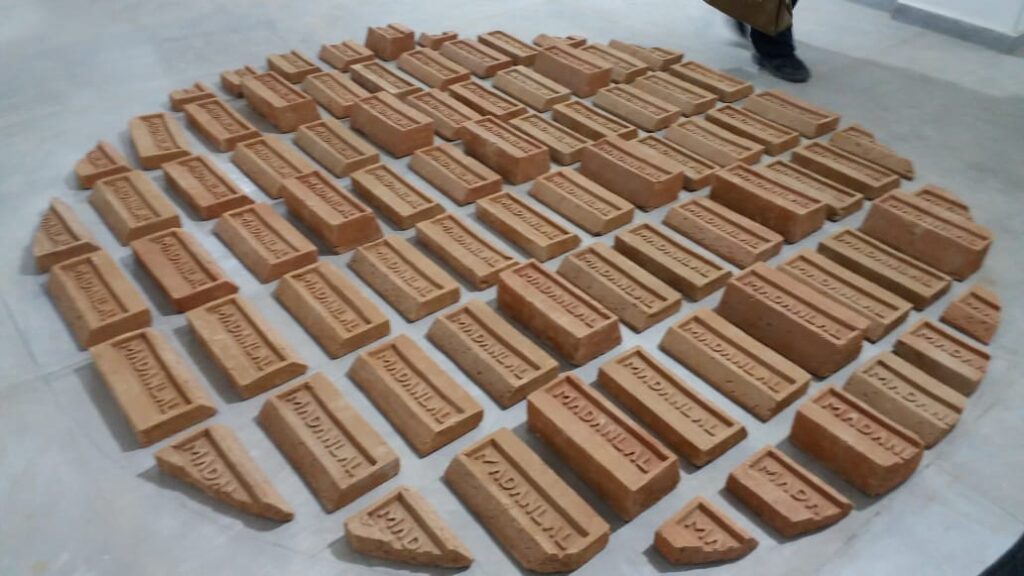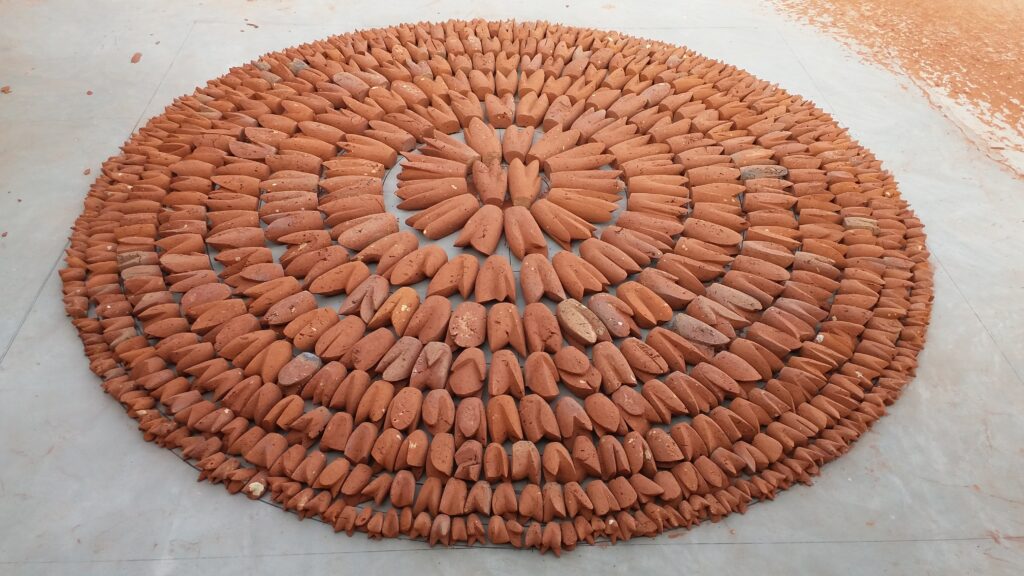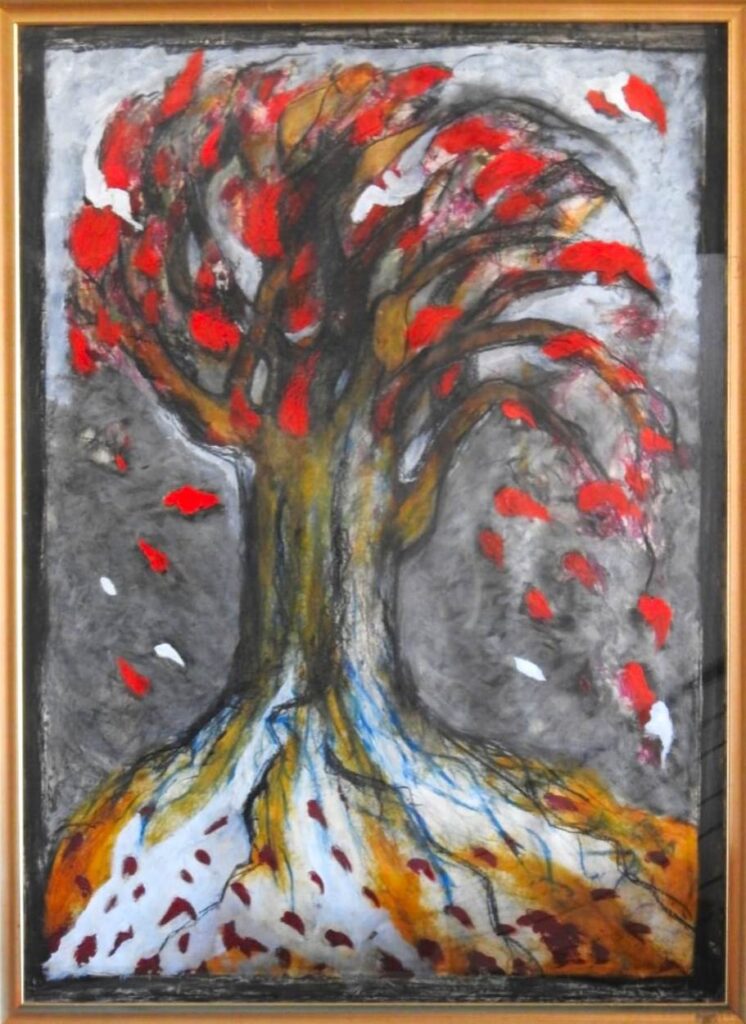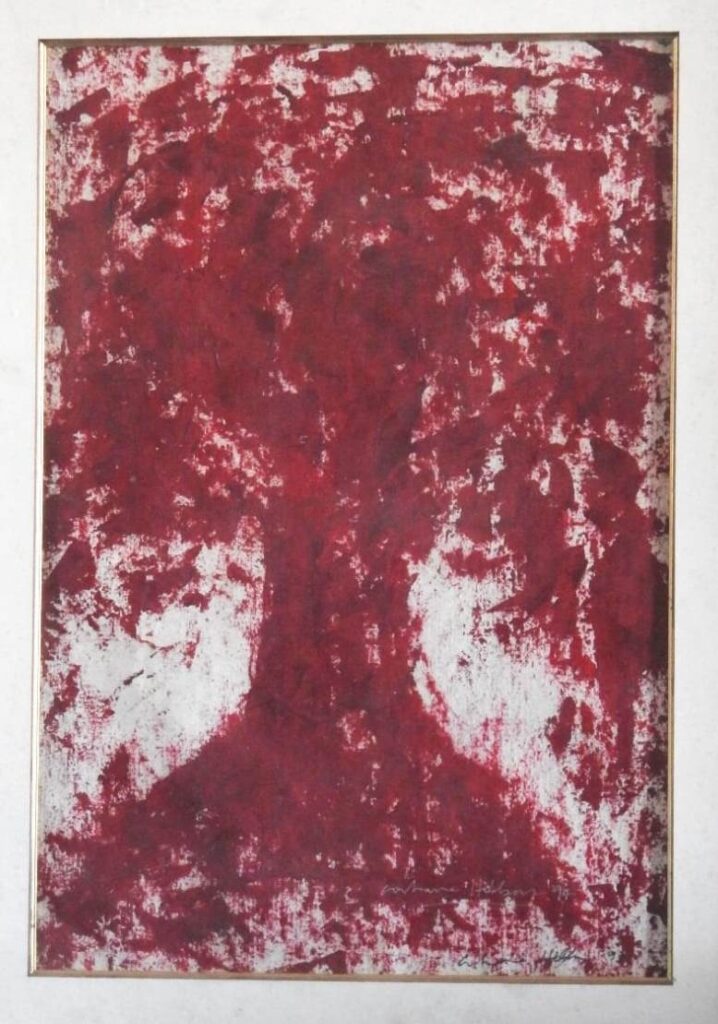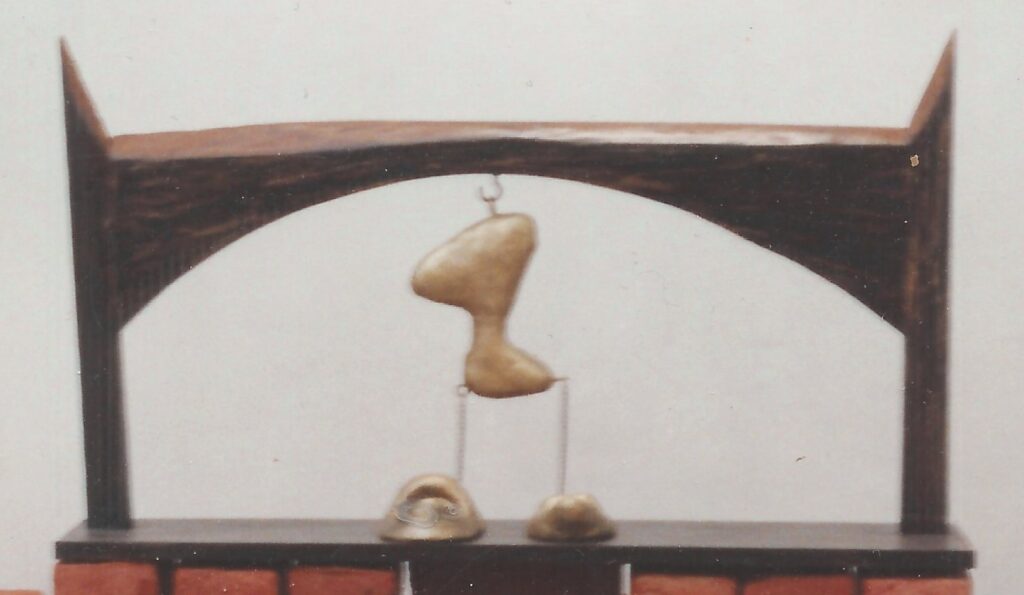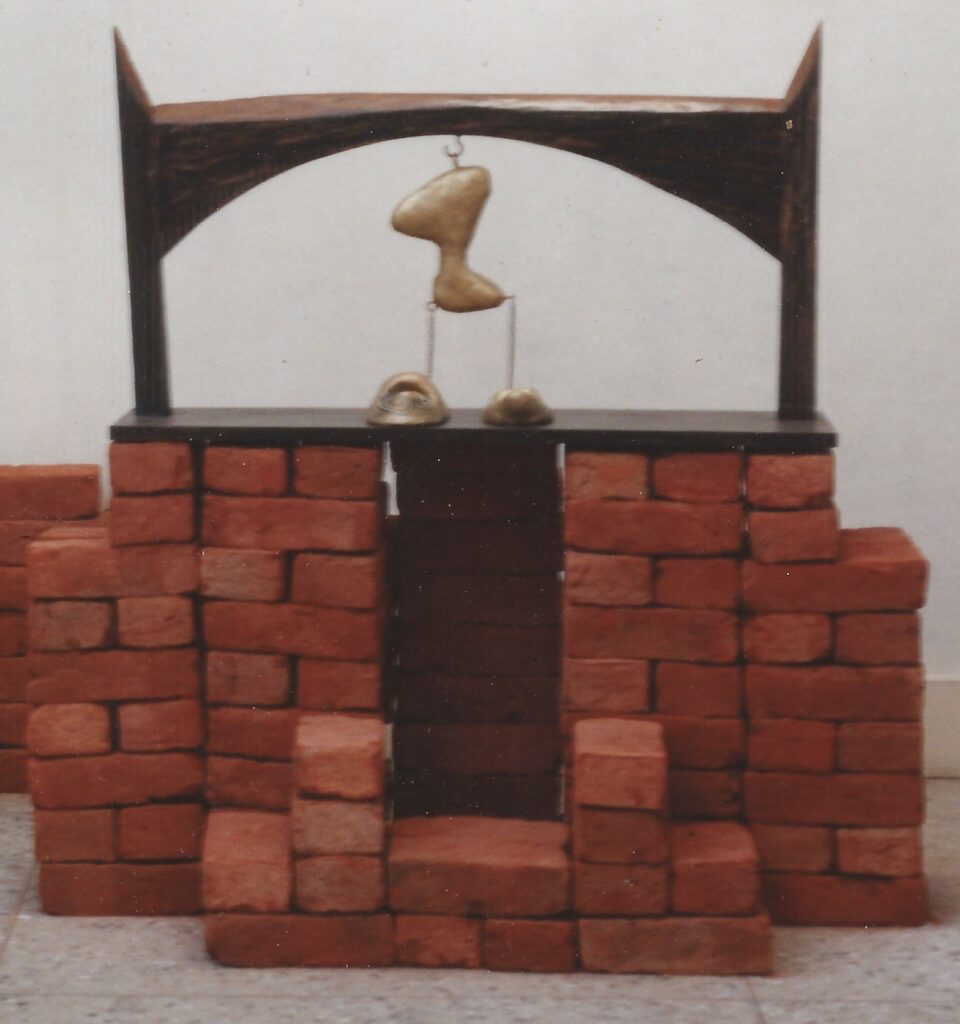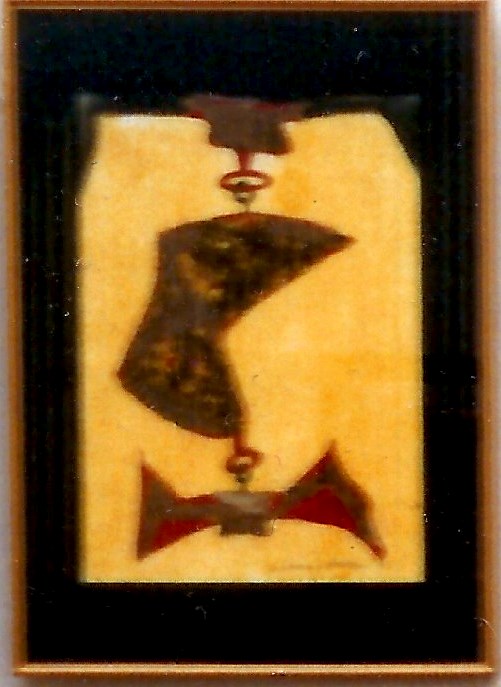Gulammohammed Sheikh’s Kaarwaan and Other Works
Note: Previously published as Experiencing Gulammohammed Sheikh’s Kaarwaan and other works in the online version of Take on Art magazine with a change in format
Archana Hebbar Colquhoun
If I were to stitch together images, information, and narratives from memory, of the lectures delivered by Gulammohammed Sheikh for our art history courses in Baroda, and left them to grow and form into a display of artworks it would be Gulam’s Kaarwaan and Other Works shown by Vadehra Art Gallery at the Bikaner house, New Delhi, from 19, February 2024 to 12, March 2024, and subsequently at Gallery Chemould in Mumbai from April 5, 2024 until 15, May 15 2024.
The works in the Kaarwaan exhibition have come out of an atelier set up with a master artist (Gulammohammed Sheikh) conceiving, designing, and directing, the works to precise specifications, which atelier hands have contributed their labor and artistic talents to and help give the works physical forms of large, wall- mounted paintings; tall, painted screens stood on the floor; and small, architectural constructions painted and with movable parts – placed at eye-level on pedestals.
The works in this exhibition throw up many surprises of which we come to later.
It is interesting to note that the works in the exhibition were made over a period of four years or more including the two years when the Covid-19 pandemic raged. The pandemic restricted the one-on-one communication between Gulam and the artists assisting him in this large project.
In what way might the interference of Covid-19 have affected the production and the final outcome of the works is a question I asked myself.
The main work – Kaarwaan – a dream sequence
Only through a dream sequence can you conjure up a vision of known, unknown and historical characters from diverse regions and disciplines belonging to different time frames in a single cluster, seen all at once. The figures in Kaarwaan are not shown as walking and moving of their own volition towards a common destination but are propelled in a boat that bounces along on wavy waters.
A kaarwaan is a group of travelers along with their living and non-living accompaniments making their journey on foot from here to there and from what is this to what maybe that in their life’s passage.
The boat in the painting, Kaarwaan, is not merely a vessel in which people are transported to a destination but it is a self-contained watercraft that also accommodates a large land mass of breathtaking landscapes with buildings, as if luring the people crowded together at the back of the boat to choose the boat itself as their final destination, in a way trapping their souls on the earthly plane of history – history written, and created by humans – although there are the angels and farishtas hovering just above the surface of the water and around the boat ready and waiting to take the souls on their onward journey to liberation. For anyone with a certain amount of knowledge and familiarity with art history the “chosen group” of people packed at the back of the boat are recognizable but Gulam is kind and he provides a map (displayed at the entrance to the gallery) of that area of the boat, which houses the figures from history, with a demarcated space for each figure on the map, spelling their name, so as to make the viewer’s journey through, into and across the painting a little bit easier and less intimidating.

Kaarawaan, Acrylic on canvas, 80 x 257 in., 2019 – 2023
Entering the gallery and viewing the works
Upon entering the gallery, I found that the arrangement of the works was in itself a creative act. Not all of the painted works could be hung on walls – as in a typical exhibition of paintings – in an array that is often monotonous.
In this exhibition are tall, double-sided recto verso painted screens, standing at strategic places that act as architectural devices, which divide the interior space of the gallery into fluid sections. Then there are the Kaavads.
At the exhibition opening when the gallery was full with visitors, and there was little room to move about, the experience was like that of negotiating movement between people and the works through shifting passages that had invisible walls. The movement of visitors was made even more complex and diversional when we were enticed to move around, sometimes in circles, to view the multiple painted doors of akaavad box shrinedisplayed atop a pedestal, once again the gallery space being broken up, by the kaavad-bearing pedestals, in a manner different to how the double-sided, free-standing painted panels divided up the gallery floor space, the arrangement creating a play of turns and many U-turns for the viewer.
The works seen in the exhibition and indeed how they were displayed engage the viewer such that their eyes flitter from one object to another in wonder and excitement with each work on display demanding the viewer’s attention in competition with the other works displayed; the experience akin to visiting a busy village fair with its many stalls and activities or grand Christmas or Diwali sales with their dazzling spread of objects and artefacts.
The varied collection of works and their display in a single exhibition creating unique paths of movement for viewers is a memorable feature of this exhibition since the same combination of works may not be presented at the same time, in a single presentation, very many times in the future. The reason is that the works belong to at least three distinct categories of structural constructions as described above. However, notwithstanding the fact that the show contained different groups of works which might prevent the works from being shown together in a single exhibition, there is the distinct possibility, even as this write-up is being prepared, that the works from the exhibition would be acquired by art collectors, removing them from public view and perhaps made irretrievable for a future show as one collective – the ownership of the works being spread out amongst many individuals and institutions.
[As a critic and a writer I am biased towards giving prominence to how artworks are presented in an exhibition space. This leaning comes from my own practice as an installation artist, where I present individual artworks with others as part of a family of inter-related works, the combinations and arrangements of which almost never repeated in another exhibition.]
Kaavads are complex, multi-paneled painted box works with dynamic moving shutters. They are sacred objects and are religious in nature.
Kaavads are portable box shrines the making of which involves the skills of a carpenter who constructs the box shrines with (light) wood and before the various parts of the kaavad are assembled into a shrine the individual parts are painted on both sides with ‘pre-planned’ narratives. The carpenter (Suthar) and the painter (Chitrakar) may or may not be the same artisan. It is a complex symbiotic relationship between the suthars/chitrakars – who are the creators of the painted kaavads – and the Kaavadiya Bhats who are the travelling storytellers who buy the ready-to-use kaavads from the suthars and narrate stories illustrated on the kaavads to their patrons (Jajmans) to whose houses they carry the kaavad and seated on the floor, placing the kaavad on their lap (tilting and moving the kaavad for better view) regale the small audience with stories from the epics, puranas and other literary texts illustrated on the kaavads while embellishing these well-known narratives with the genealogies of the patrons and extrapolating further the stories with “news clips” from contemporary happenings.
The kaavad is central to this tradition of storytelling prevalent in Rajasthan and while the kaavad is a prop, a device or an accompaniment to the performance of storytelling this embellished box shrine is way more than that; it is in fact the main actor, the protagonist that is central and indispensable to the kaavad presentation.
The kaavads in Gulam’s exhibition, I found, were completely novel structurally compared to the traditional kaavads. These fascinating kaavads that Gulam presents in his exhibition have even more multiple doors opening up in even more directions than the most complex of traditional kaavads I have seenand that I bought at craft fairs many years ago for my own small private collection. The paintings on the surfaces and the small door panels of the kaavads in the exhibition were certainly those by/of Gulam (’s). I assumed that the kaavad box structures were bought directly from artisans who make the kaavads, but prior to them being painted by a chitrakar, and the blank surfaces of the little folding doors and the walls of the small box-shrine being painted on by Gulam with narratives of his choice. But I was corrected by Gulam when I posed this question to him, in that these multidimensional structures were, in fact, designed by Gulam and not bought as ready-to-use objects (as do the storytelling kaavadia bhats). This fact was a revelation to me as I only knew Gulam as a teacher of art history, giving spell-binding lectures (a brilliant storyteller himself), and as a painter and a muralist
Gandhi, Acrylic on board 18 x 34 x 31 in., 2019 – 2024
Note:
I moved to Japan in the late 80s developing my own artistic idiom and was isolated from the goings on in Baroda and New Delhi, the two places where my mentors and artist-peers functioned as art professionals during which time many of whom grew greatly in stature.
The structure of the kaavads and the narratives they hold
Due to the many ways and directions in which Gulam’s kaavads can be opened, with each surface and each door depicting a scene or scenes – the totality of the many different tableaux adding up to a multitude of detailed narratives in one single kaavad, the viewer could consume the entire time planned to spend at the exhibition simply studying just one of the kaavads.
Another noticeable departure in Gulam’s kaavads, other than structural, from the traditional kaavads is the subject matter of the narratives painted on the surfaces of the boxes, making them no longer shrines but structures which house historical and contemporary narratives that are non-religious.
The kaavads in the exhibition are titled as follow:
- City Blues, water colour, casein on wood 13 x 30 x 19 in., 2020
- Gandhi, Acrylic on board 18 x 34 x 31 in., 2019 – 2024
- Deluge, Water, Life, Casein, water colour on wood 10 x 35 x 28 in.,2019 – 2024
Having seen the kaavad box shrines in the exhibition, I could imagine Gulam creating a single kaavad, not as a miniature box-shrine displayed on a pedestal in a gallery but as a large architectural structure such as a kaavad room that accommodates people, who enter and exit the kaavad room from various doorways. This surmise of mine turned out to be a happy and unexpected synchronicity of reading an artwork as Gulam had already made such a kaavad room. I learnt this fact when I watched a YouTube video of Gulam’s – subsequent to including the above observation in this article – where he described a 7 to 8 ft. tall kaavad house he had created, not very many years ago.
Painting as Tapestry
The 21 ft. long painting – Kaarwaan – has large areas that are predominantly rendered with perfectly drawn parallel curved lines, denoting waves in the sea.
However, I viewed the painting as if it was an ancient tapestry that had undergone wear and tear, through extensive handling or neglect, whereby the tapestry retained many islands of its original woven rendering of narratives – the main image of a boat; the slope on the left hinting at a final destination for the people on the boat; and small, individual beings and animals scattered around the boat, the original weave being intact.
Conversely, the large areas of the painting occupied by waves I saw as those where the woven wefts of the tapestry had worn off and the fragile underlying warps being visible, creating a mystery and an opportunity for the viewer to fill up the near-blank spaces with a composition of narrative imagery through freewheeling imagination; each viewer recreating the entirety of the tapestry, in a manner uniquely their own.

Detail of Kaarawaan, Acrylic on canvas, 80 x 257 in., 2019 – 2023
The paintings displayed on the walls in the exhibition are as follow:
- Kaarawaan, Acrylic on canvas, 80 x 257 in., 2019 – 2023
- Simurgh aur Pariyaan, Acrylic on board, 84 x 15.5 in., 2019 – 2024
- Hunted, Acrylic on Board, 84 x 15.5 in., 2018 – 2024
- Francis and Kabir; Acrylic on canvas, 78.5 x 123.5 in., 2010 – 2023
Recto Verso panels or free-standing painted screens
The double-sided vertical panels in the exhibition with the sides defined distinctly as either Recto or Verso bear the following titles:
- A. Majnun in the Forest (Recto) B. Tree of Sleep (Verso) Acrylic on board 84 x 48 in., 2019 – 2023
- A. Conference of Birds (Recto)B. Lands Violated (Verso) Acrylic on board 84 x 48 in., 2023 – 2024
- A. Dus Darwaze (Recto) B. Forest Fire (Verso) Casein on canvas mounted on board 84 x 30 in., 2019 – 2024
- A. Rising (Recto) B. On the Prowl (Verso) Acrylic on board 84 x 18 in., 2019 – 2024
My earliest experience of dealing with recto verso pages in a notebook was when, as a child, I tore off the last page in my notebook, which was blank and to my astonishment found that the first page, perhaps the most important in the notebook, had become detached.
The fascinating aspect of recto and verso sides of a page is that the two sides could contain continuous text of a same narrative or texts that are not related to one another as in when a new chapter of a book or an entirely different essay begins on either the recto or the verso side of a page.
The aspect of un-relatedness between the contents printed on the front and those printed on the back of a page is undeniable and becomes obvious when the staples that hold together the pages of a notebook are removed and each folded sheet, now detached, previously forming four pages numbered for example, 1, 2, 15, and 16, containing distinct blocks of text on each of the four pages where the texts on the two recto and the two verso sides, i.e. the two sides of the sheet, are completely jumbled and apparently randomly selected for printing.
So, are the recto and verso sides of the painted panel, for example, the panel titled “Dus Darwaze” on one side and “Forest Fire” on the other, related or unrelated in their content?
The double-sided painted panels in the Kaarwaan exhibition contain another example of playful dialogue that the audience carries out with the work , which Gulam introduces in his works.
There is precedence in European art of the middle ages, depicting predominantly Christian subjects, to painting both sides of a panel with narrative scenes or iconic subjects. The double-sided painted panels may be an individual panel stood on its own or the panels could be doors of an altar of which the doors are an integral part with both sides of the doors bearing paintings, which when opened and shut reveal closely related narratives or individual episodes from the bible depicted on either side of the altar door. The architectural structures of the medieval Christian painted altars; the double-sided painted panels; the diptychs and triptychs etc. are all present as artistic ideas in the kaavads and the recto verso works of Gulam’s. However, the ideas drawn from the above sources are uniquely transformed by Gulam, leaving the viewer to either accidentally or through labored research find the sources and their connections to Gulam’s works.
The tree of life and a catalogue of birds – from the recto verso series
Content and Subject Matter – briefly viewed
The exhibition touches upon a range of issues, one among them being the degradation of the planet Earth and a very real possibility of extinction of many life forms, for example, of the birds in the painting, Conference of the Birds*, and referring through absence, in the painting, to the unfathomable range of species on earth that are dwindling in numbers rapidly, even the common ones.
The dense, dark greens of the tree and the background areas of the painting also rendered in greens, not allowing any daylight to filter through, invoke feelings that an end is near.

The Conference of the Birds (Recto); Lands Violated (Verso); Acrylic on board 84 x 48 in., 2023 – 2024
The painting, The Conference of the Birds, draws upon bestiary and aviary subjects depicted in medieval illuminated manuscripts and Indian miniature paintings, especially paintings produced at the ateliers of Mughal emperors.
The painting serves as a pictorial counterpart of the DNA data banks of life forms or refers to a modern day Noah’s Ark. The birds in the painting can be taken to be ones which are part of a selection of endangered birds that are under preservation orders, set by an expert committee, even many of the common ones.
[* The Conference of the Birds is a visual representation of the allegorical poem by the Persian Sufi poet Farid ud-Din Attar, 1177 A.D. In the poem the birds speak with each other about appointing a suitable sovereign. Each of the birds represents a human failing and to find the sovereign, the Simorgh, the seven valleys of vices have to be crossed. The poem symbolizes the intractable trials of being human. The motif of the tree of life is recurrent in Gulam’s works and he described in one of his interviews that a tree need not always be an independent entity in itself but can be an abode that houses other living beings. In addition to animals and birds, Gulam’s trees house portraits of his artist friends and other individuals, each portrait hanging somewhat like a large fruit in the tree.]
Style – Stylization and Realistic Rendering
Style in Gulam’s paintings has many identifiable roots; however, homogeneity in style is maintained through careful curation.
The elements within each composition in Gulam’s paintings are drawn in the styles of medieval illuminated manuscripts of Europe and the various schools of Indian miniature paintings; however, the scale of the works are large and by using a style/styles of figuration of what are traditionally intimate, hand-held works in a large-scale painting, he introduces other ways of looking at his works to that of an intimate viewing, that which requires distance.
A folio page of an album of miniature paintings can be studied without so much as moving the head, while in the case of the large paintings of Gulam’s the viewer is required to walk back and forth, forwards and backwards, and across from left to right and back to view a single painting – the figures and forms (greater in number) being painted in the various miniature styles and in varying sizes, on a large canvas.
Interestingly, the same “miniature” style of rendering figures and forms is applied to both large as well as small areas of painted surfaces – the large wall-mounted paintings; the recto verso panels; the surfaces of the small, shifting doors and the fixed walls of the kaavad box shrines.
Note: I am yet to have the opportunity to study the sizes of the figures in Gulam’s paintings and compare them with the ones in the miniature paintings to see what differences there are in the sizes of figures relative to the size of the works.
However, when “realism” is introduced into a painting, as in the work Kaarwaan, the rendering of figures and faces deviates, to a degree, so as to stubbornly retain a certain stylization that is personal and still drawn from the “miniature” style of painting.
Palette
The palette of the works in the Kaarwaan exhibition is distinctly sober compared to Gulam’s larger body of works dating from the earlier years of his figurative-narrative paintings.
The vibrant reds of Gulam’s earlier works are replaced in the present works with deep mustard yellows and dense olive greens in the larger areas and touches of titanium white made to shine forth luminously from small areas.
The hallmark of Gulam’s earlier works is the use of swathes of red, the pigment laid flat with no hint of textures from brush work or variations in hue from dilutions and mixing of paint, unless a colour gradation as in the edges of a flat surface is clearly intended.
While in the earlier works the large, flat areas of red connect self-contained locales of narratives, in the painting Kaarwaan, for example, and in other works in the exhibition the connecting areas are filled with delicate line work and other textured inclusions.
[This point I need to study further by viewing the actual paintings rather than their reproductions].
A large expanse of wavy lines surrounding jutting rocks of the Zen garden -Ryoan-ji – in Kyoto, Japan
The composition of the Zen garden in Kyoto with a sea of parallel, wavy lines raked in sand amongst which isolated, jutting rocks are arranged to perfection is a reference that I, as an observer, could not miss. It was from Gulam’s lectures on Japanese art that I first learnt of this extraordinary work of dry landscape art. Here colour is almost entirely absent and ephemeral lines drawn in sand act as rendition of a background to the rocks, which are found objects, not hewn and transformed in anyway, an example of the concept of wabi-sabi in Japanese aesthetics.
Colour and the meanings of colour
In yet another one of his YouTube videos (which, I also found subsequent to having written the first draft of this write-up) Gulam talks about the use of bold, flat, non-local colours, especially the reds in Mewar miniatures as drawing from senses other than the visual. The colours in the Indian miniature paintings are not only those that are seen but those which are sensed through edible items that have distinct tastes. This made me ponder the reason for the change in Gulam’s palette from the vibrant to the sober. Have the colours in Gulam’s paintings changed to a certain extent because of his repeated encounters with European and North American cuisine with the dull yellows and browns of say a burger, and his long(er) exposures to western cuisine, which is more weighted towards texture rather than strong flavors and colour?
Intertextuality
In addition to stylistic and compositional references – conscious, intended, or subliminal – to works in the history of art, Gulam also extracts images and figures from the works of other masters as well as his own and scatters these extracted images as pictorial quotations within the expansive compositions of his paintings, introducing new meanings to his works.
CONCLUSION
The exhibition contains other important works – Kabir and St. Francis in a mapa mundi work- that I have not discussed in this write-up. There is also the absence of a greater discussion and analysis of the extensive content and subject matter of the works in the exhibition, except for a brief discussion relating to the painting “Conference of Birds.”
As a concluding statement, I would say that the works in the exhibition Kaarwaan and Other Works are the product of a sophisticated, thinking mind that carries knowledge both expansive and of great depth, which is ever increasing.

